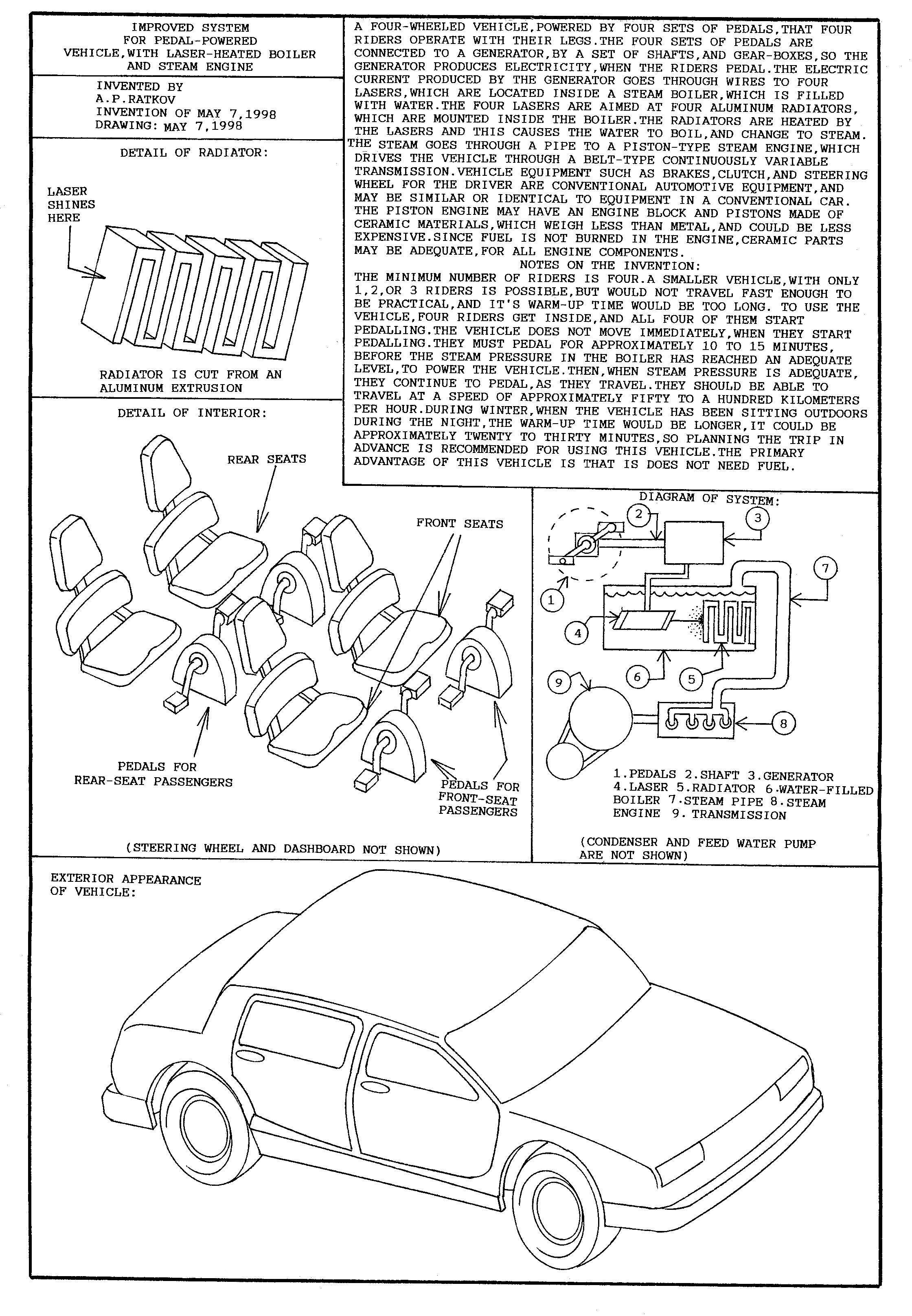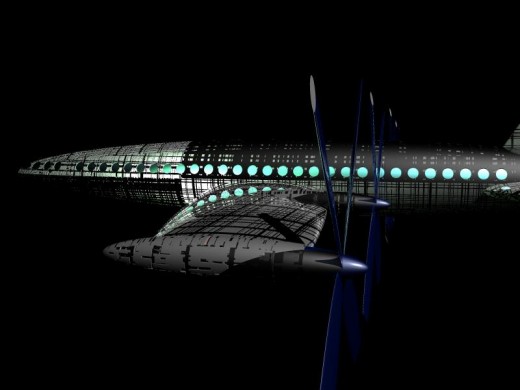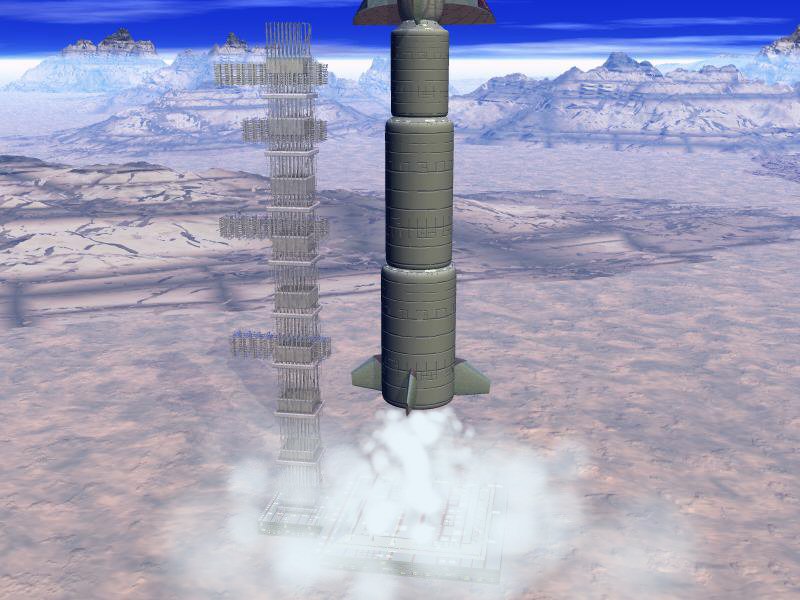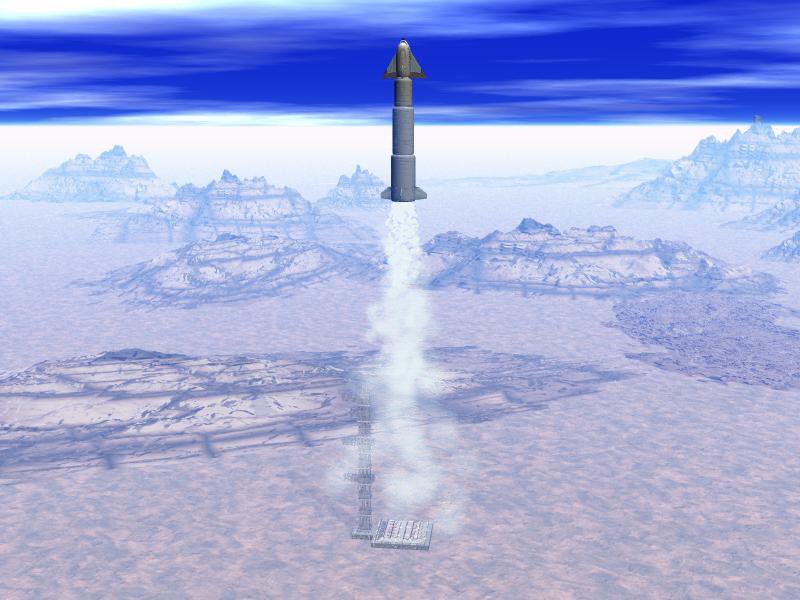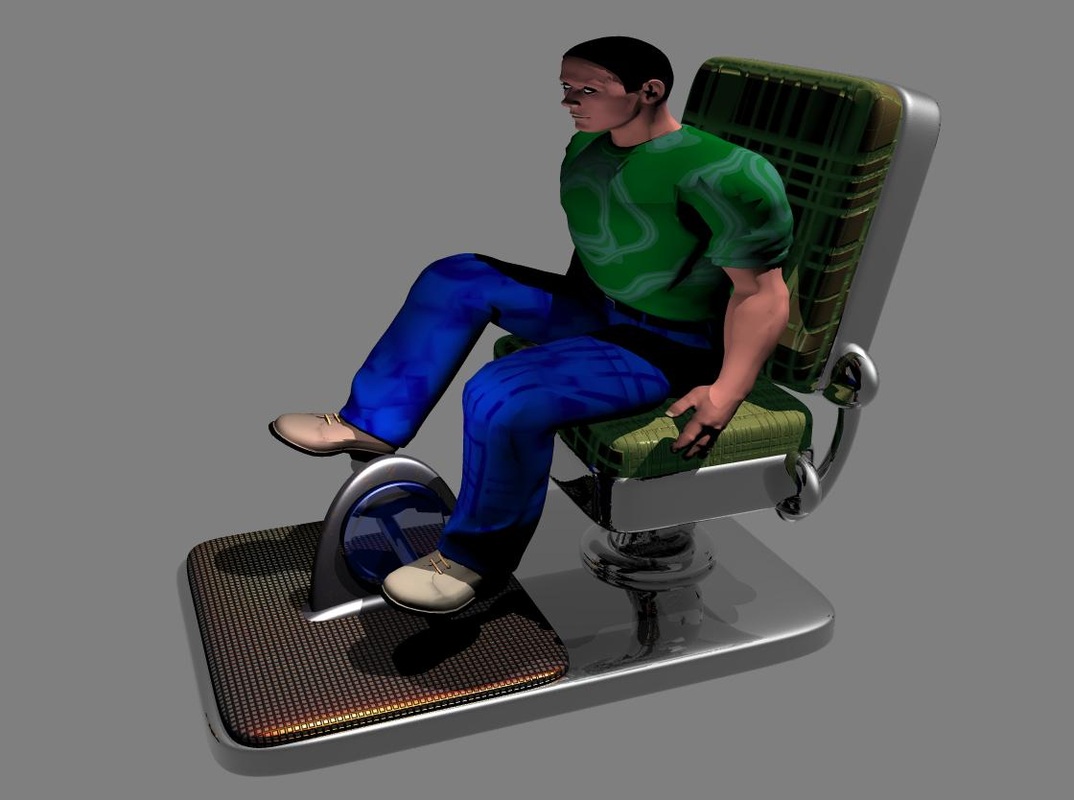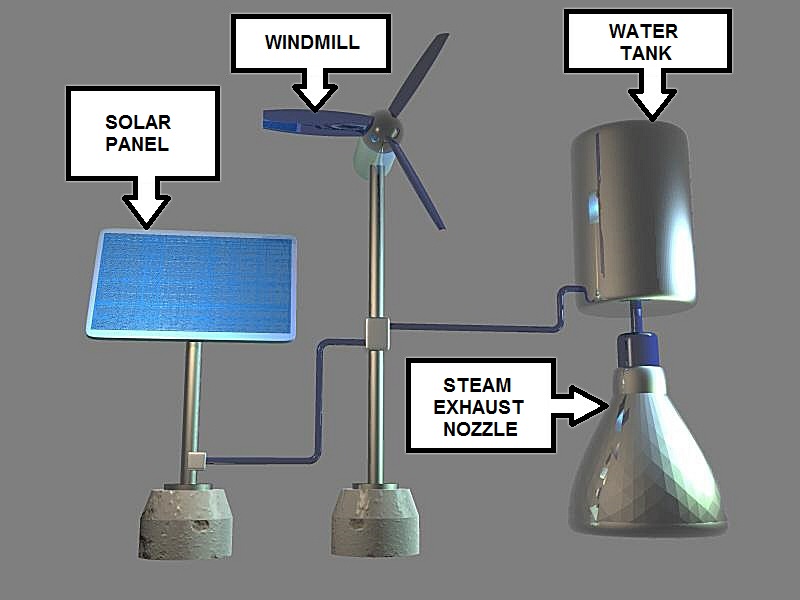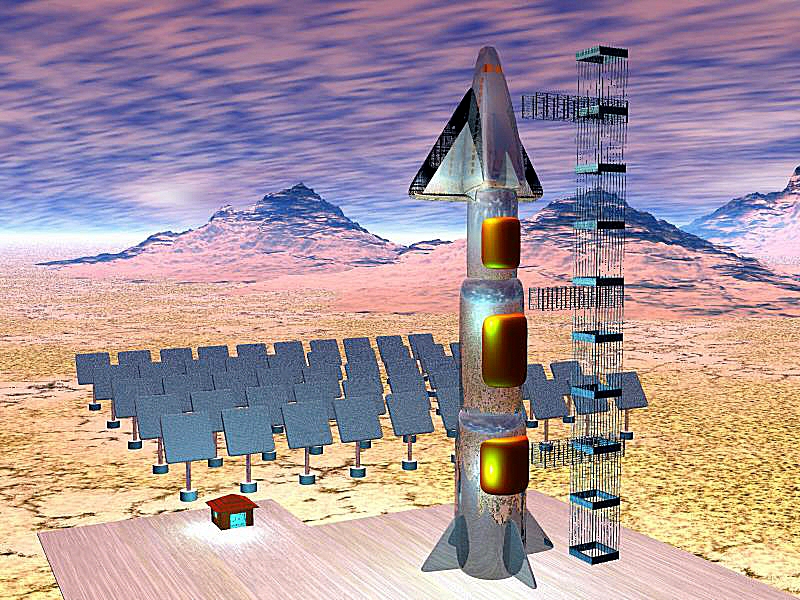Human-Powered Vehicles.
Inventions for human-powered vehicles by Anthony Ratkov, including inventions for human-powered cars, trains, airplanes and rockets.
Human-Powered Cars.
Human-Powered Trains.
A human-powered train would resemble an ordinary passenger train that is operated on ordinary railroad tracks, except for it's power source. Power for the train would be provided by a group of people inside the train who are pedaling. Each passenger on the train sits in a seat that has a set of pedals in front of it. Each set of pedals is connected to an en electrical generator located under the floor of the train car. When the passengers pedal, the electricity they produce travels through cables to the electric motors that drive the wheels of the train. There may be several hundred people inside the train pedaling simultaneously.
Above: A typical seat for a train passenger, with a set of pedals located in front of it.
The illustrations above show train passengers seated while they pedal.
The illustrations above show the train's exterior.
Human-Powered Airplanes.
The illustration above shows the basic unit of power for the human-powered airplane: a passenger seated at a set of pedals. There would be an electrical generator located under the floor of the plane, so that when the passenger turns the pedals, the pedals provide power to the generator, so the generator makes electricity. The electricity produced by each generator travels through cables to electric motors that turn the plane's propellers.
The illustration above shows passengers in the airplane pedaling. The passengers must pedal constantly during the flight. There may be as many as a hundred passengers pedaling simultaneously.
Above: Two computer-graphic illustrations of a human-powered aircraft. The extra-long propellers shown in the illustrations may be retractable, for landing.
Human-Powered Rockets.
A human-powered rocket is essentially a steam rocket that is propelled by steam exhaust. The rocket would contain a water tank, and the water in that tank would be heated with electricity, until it boils and turns into the steam. Steam escaping from the exhaust nozzle at the bottom of the rocket propels the rocket into the air. The electricity needed for boiling the water comes from a group of astronauts inside the rocket, who are seated in front of pedals. The pedals are connected to an electrical generator. When they turn the pedals, they produce electricity. There may be as many as fifty astronauts in the rocket pedaling simultaneously. If the power produced by the astronauts is insufficient to get the rocket into orbit, additional sources of electricity may be used, for example, there may be an array of solar panels at the launch site and these solar panels may provide electricity to the rocket, before it is launched. There may be a group of windmills at the launch site, and these windmills may also provide electricity to the rocket, during the pre-launch period.
Above: A set of pedals, which is the basic unit of power for the rocket. Each astronaut's seat would have a set of pedals mounted on the floor in front of it.
Above: a diagram showing a set of pedals connected to a generator. The generator is connected to a water tank, and the water tank is connected to the exhaust nozzle of the rocket. When the astronaut pedals, he produces electricity, and the electricity is sent to the boiler, where it is used to boil water. The steam produced by the boiler goes to the exhaust nozzle, where it provides thrust when it escapes from the rocket.
Above: The same system with four sets of pedals connected to it.
Above: A diagram of a three-stage steam-powered rocket. Each stage would be jettisoned when it runs out of steam. As many as fifty astronauts would sit in the re-entry vehicle at the top of the rocket. All of the astronauts would have to pedal simultaneously during the launch and ascent phase of the flight.
Above: A computer-graphic illustration of a human-powered rocket, at the launching pad, ready for launch. The astronauts would have to pedal for several hours before the launch, to raise the temperature in the rocket's boilers to the proper level.
The illustrations above show the human-powered rocket being launched. The steam exhaust is visible below the rocket.
The illustrations above show an astronaut in zero-gravity. The astronaut may hold on to a rope, to steady himself in the zero-gravity environment.
The illustrations above show possible seating arrangements for the astronauts inside the re-entry vehicle. As many as fifty astronauts may fly in the re-entry vehicle.
The pictures above show how the rocket's thrust could be augmented with solar cells and windmills. Solar panels and windmills can help the rocket top take off, but after it takes off, the astronauts pedaling inside would be the sole source of power for the rocket.
The illustrations above show how batteries could provide additional power for the rocket. The batteries would be jettisoned when they run out of power, to reduce weight.

